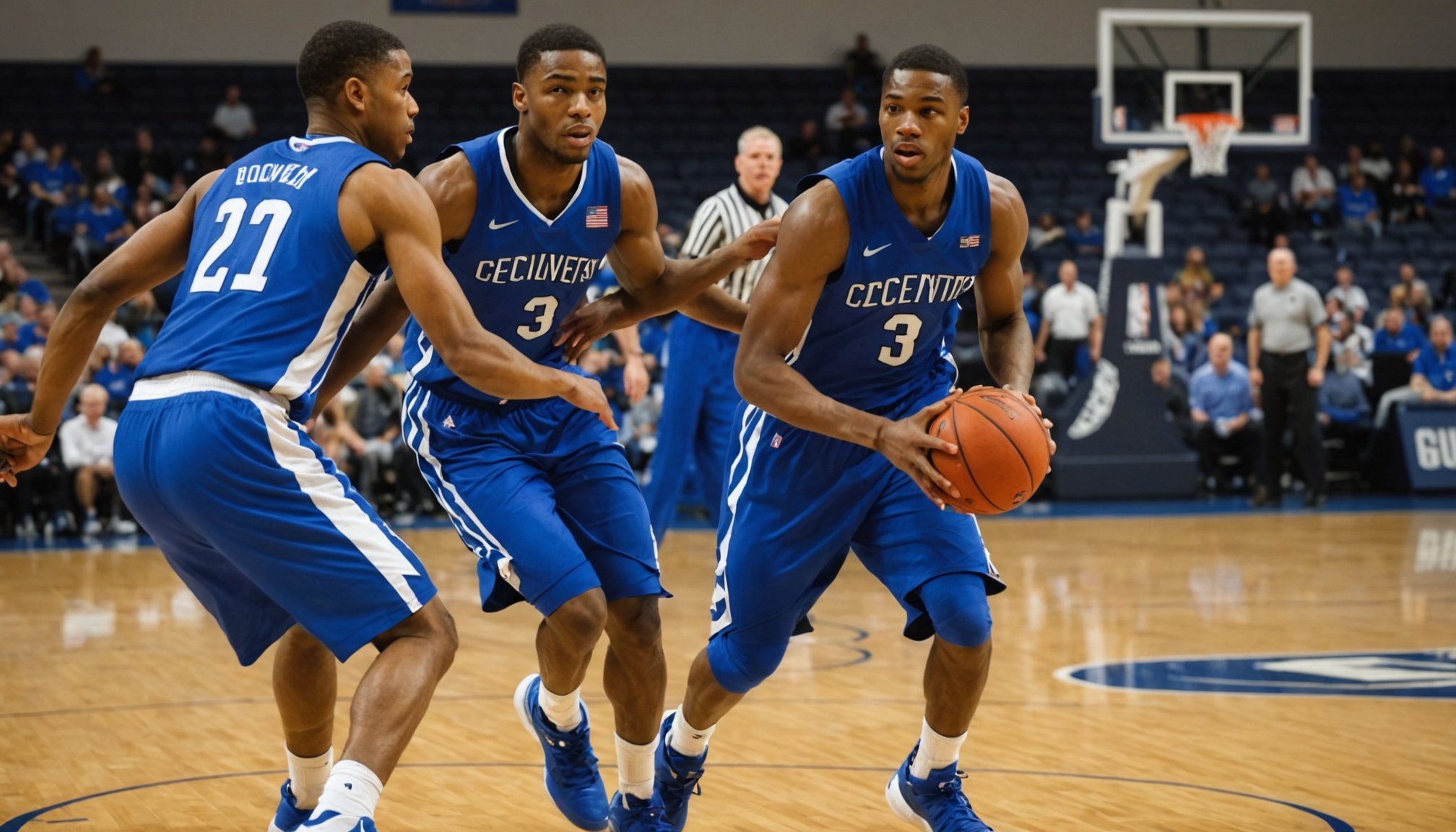Understanding the Importance of the Offensive First Step
The offensive first step is a pivotal element in basketball skills that can significantly enhance a player’s performance. It involves a quick, decisive move that allows a player to gain an initial advantage over the defender. This advantage can be the difference-maker in a closely contested game, as it creates opportunities for successful drives, penetration, or setting up teammates.
Incorporating a rapid first step into one’s basketball skills can disrupt defensive setups, giving the offensive player the upper hand. Quickness in this context means the ability to explode off the mark and necessitates careful training to hone both speed and agility. When players master this move, they contribute not only to their individual success but also to the overall offensive gameplay of their team. The ability to execute a powerful first step can often dictate the flow of the game by creating spaces and mismatches, leading to higher scoring opportunities.
This might interest you : Elevate your vertical leap: the ultimate strength training blueprint for basketball athletes in the uk
The importance of quickness and explosiveness cannot be overstated, as these attributes enhance the effectiveness of the offensive first step. In practice, developing this skill requires a focus on lower-body strength and balance, as well as agility drills that improve reaction time, enabling players to outpace their opponents effectively.
Proven Drills to Enhance Your First Step
Enhancing your first step in basketball requires basketball drills that focus on both skill development and precise training techniques. This section explores drills conducive to individual and partner practice, along with structuring routine practice.
In parallel : Boosting flexibility for injury prevention in uk basketball athletes: essential strategies for a safer game
Individual Drills
For solo practice, concentrate on exercises that improve footwork and speed. Key basketball drills include:
- Ladder Drills: Enhance agility by incorporating high-speed footwork patterns.
- Cone Drills: Set up a series of cones for quick directional changes to boost agility and explosiveness.
- Shadow Shooting: While mimicking game situations, work on speed in initiating movement.
Partner Drills
Training with a partner enables competitive scenarios. These training techniques include:
- 1-on-1 Races: Stimulate defensive pressure akin to in-game conditions.
- Closed-Defense Drills: Train with a partner to simulate defensive challenges.
- Competition Drills: Encourage quick decision-making and responsiveness.
Routine Practice Structure
Structuring your practice is crucial for effective skill development:
- Schedule Consistency: Engage in basketball drills at least 3-5 times weekly.
- Session Duration: Aim for 15-30-minute segments per drill.
- Repetition Focus: Consistent practice builds muscle memory, enhancing performance.
Commitment to such drills nurtures a swift and effective first step.
Expert Tips for Sharpening Your Skills
Basketball players looking to level up must harness various coaching insights to refine their techniques. One area of focus should be proper foot placement and body positioning. This is crucial as it affects your balance, speed, and ability to change direction swiftly. You should maintain a low centre of gravity and ensure your weight is evenly distributed to quickly react to the game’s ever-changing pace.
Another vital aspect is the use of body feints and fakes. These are strategic movements that can mislead defenders and create opportunities. When executed with precision, feints can shift the defender’s weight in the wrong direction, allowing for an advantageous play. Practice these movements consistently to keep defenders guessing.
Additionally, mastering strategies to read and react to defenders is essential. Start by watching their hips and shoulders, signals that often betray a defender’s intentions. Quick decision-making is key; the more you play, the better your predictions will become. Developing this sense of anticipation empowers players to dictate the tempo, making them formidable opponents on the court. Engage with these basketball expertise tips to enhance your game consistently.
Addressing Common Challenges
When engaging in sports, player challenges can often create a barrier to peak performance. Among these, skill obstacles are a frequent concern. A lack of explosiveness in the initial move can hinder progress. Recognising this as a barrier is the first step toward improvement. Training drills focused on speed and agility can help, allowing athletes to develop quicker reactions and more dynamic starts.
Understanding the importance of tailored improvement strategies is crucial. Techniques such as plyometric exercises are beneficial, as they enhance muscle strength and jump-start agility. Consistent practice with high-intensity interval training (HIIT) can similarly increase overall explosiveness, enabling a faster and more effective first step. Players may find their confidence blooming as their physical performance begins to match their aspirations.
Strategies for building confidence in offensive play are equally vital. Positive visualisation and self-belief exercises can bolster a player’s mindset. Routine practice against various defensive setups can also foster adaptability and readiness, creating an offensive strategy that leverages each player’s unique strengths. Ultimately, these strategies aim to empower players, providing them with the tools necessary to clear hurdles and advance their athletic skills.
Suggested Training Regimen
Enhancing athletic abilities requires a well-structured training plan that balances skill development with fitness routines tailored to individual needs.
Weekly Training Schedule
A versatile weekly training schedule can significantly boost offensive skills. Devote specific days to skill work, such as shooting drills and tactical gameplay, to improve offensive capabilities. Complement these sessions with physical conditioning—such as agility drills, strength sessions, and endurance workouts—ensuring a balanced fitness routine. Integrate flexibility practices, like yoga or dynamic stretching, to enhance movement fluidity and decrease injury risks. Recovery days are essential, allowing the body to heal and adapt.
Nutrition and Conditioning
Diet plays a pivotal role in athletic performance. Maintain a dietary plan rich in essential nutrients to support training demands. Conditioning exercises should focus on building core strength and cardiovascular health. Recovery strategies, like adequate hydration and sleep, alongside methods like massage or ice baths, are crucial to prevent injury and sustain performance.
Tracking Progress
To measure improvement, implement methods such as video analysis or performance metrics evaluation. Regularly assess skill progression and modify practice routines accordingly. Setting specific goals and milestones provides motivation and a clear direction for the training journey, fostering continuous skill enhancement.











